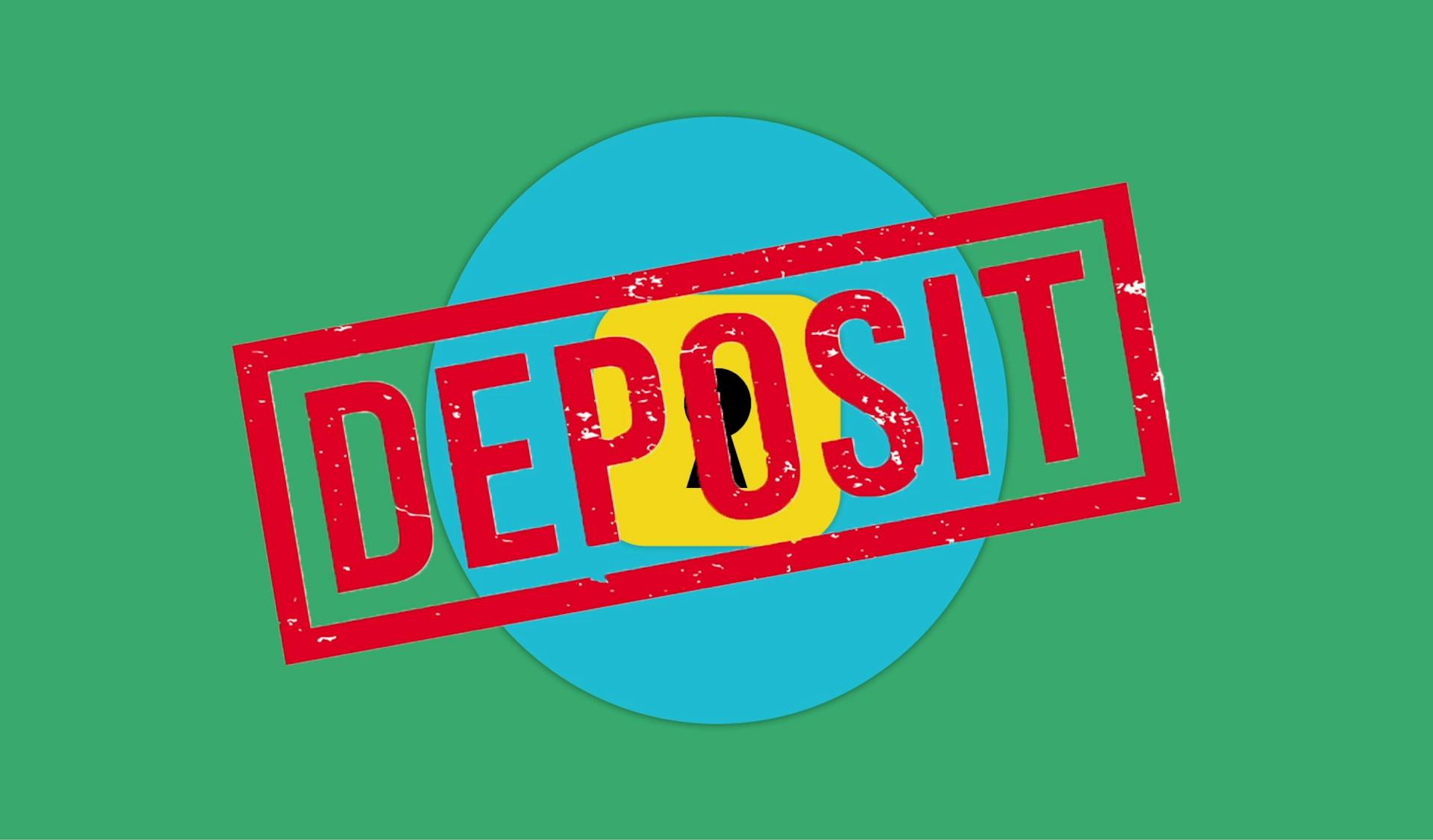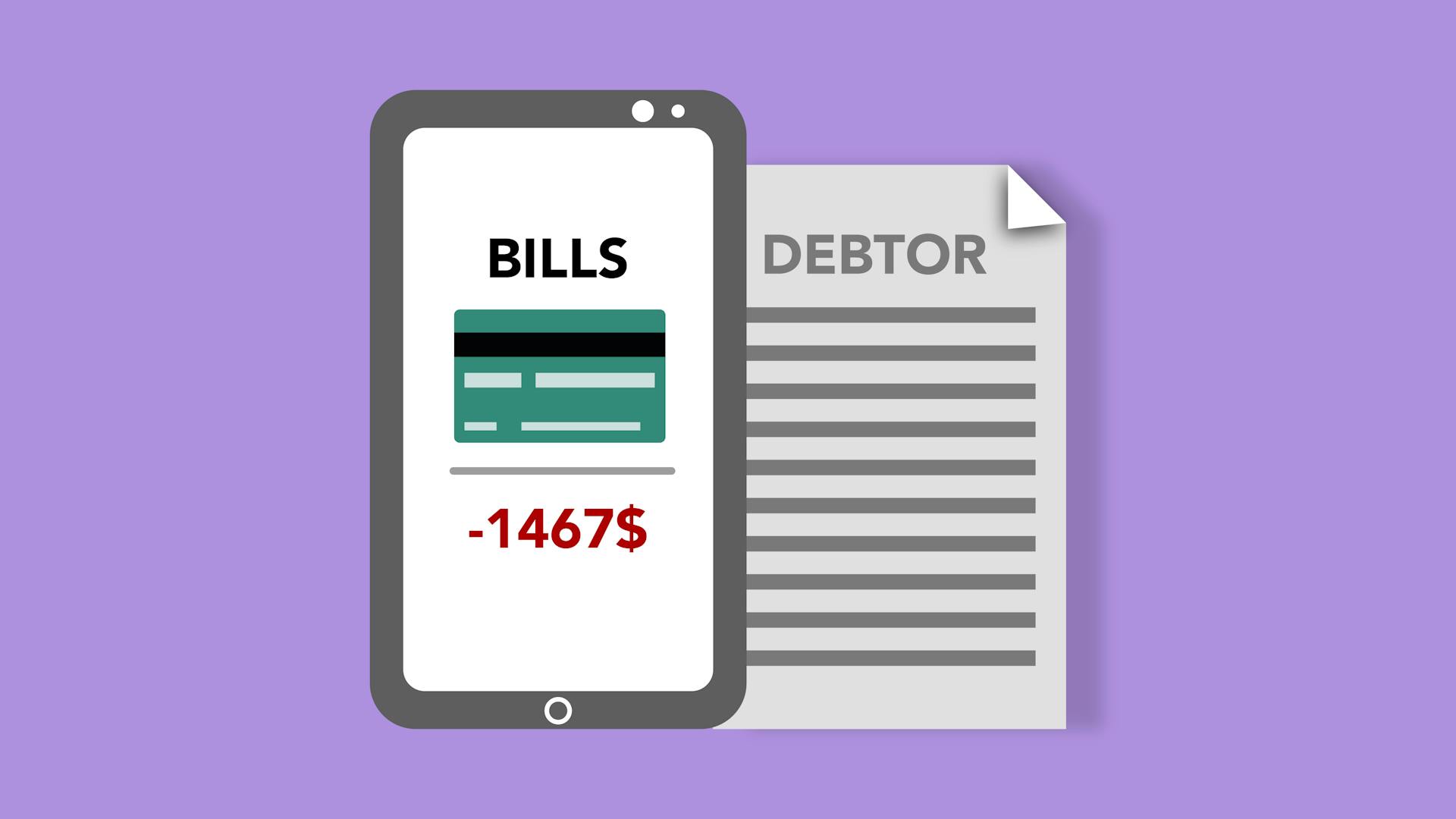
If you're a small farm business owner, you're likely no stranger to the challenges of securing funding. The FSA microloan program can be a game-changer, providing access to capital that can help take your business to the next level.
The FSA microloan program is designed for small and beginning farmers, providing loans of up to $50,000. This can be a huge help in covering startup costs, expanding your operation, or even just getting through a tough season.
To be eligible for an FSA microloan, you'll need to have a solid business plan in place. This should include a detailed financial plan, as well as a plan for how you'll use the loan funds.
What is a Microloan?
A microloan is a small loan of up to $50,000.
Microloans are designed for small businesses and entrepreneurs who may not have the collateral or credit history to qualify for a traditional bank loan.
They are typically used to cover start-up costs, such as purchasing equipment or inventory, or to help a business recover from a financial setback.
Microloans have a fixed interest rate and a repayment term of up to six years.
The FSA microloan program provides these loans to eligible farmers and ranchers who are starting or expanding a small business.
For another approach, see: Microloans to Women
Eligibility and Application

To be eligible for an FSA microloan, you must meet certain general criteria, including not having federal or state convictions for controlled substances, having an acceptable credit history, and being a U.S. citizen, non-citizen national, or legal resident alien.
You must also be unable to obtain sufficient credit from another source, with or without an FSA loan guarantee, and have no delinquencies on any federal debt, other than IRS tax debt, at the time of loan closing.
To apply for an FSA microloan, you'll need to set up FSA Records, which give your farm a unique identifier, and gather various documents, such as copies of your leases, contracts, and financial statements.
You can contact your local FSA office directly for more information and to begin the process with a loan officer, or use a simplified application form to save time and ensure you're filling out paperwork properly.
To be eligible for a Direct Farm Ownership Microloan, you must have at least 3 years of farm management experience within 10 years prior to the application date, or meet certain alternative requirements, such as having some farm experience or working with a mentor.
Recommended read: Fsa Guaranteed Loan Application

Here are the alternative requirements for Direct Farm Ownership Microloan applicants:
The USDA FSA Microloan program is designed to support small, non-traditional, and niche agricultural operations, and applicants must demonstrate a need for the microloan, managerial experience, and farming or ranching skills sufficient to run a successful operation.
Applicants must also showcase that they are unable to secure credit from traditional sources, have no federal or state offenses related to agriculture or immigration, and have no outstanding or delinquent debt to the USDA or its agencies.
To be eligible for an FSA microloan, you must have been denied a commercial loan elsewhere, and the FSA is less concerned with your exact credit score and more concerned with your credit history.
Readers also liked: Sba Microloan Credit Requirements
Loan Details
The maximum loan amount for USDA FSA Microloans is $50,000. This amount can be used to cover essential expenses such as purchasing land, seeds, equipment, and livestock, and other operating costs.

The repayment term for these loans can range from one to seven years, depending on the individual needs of the borrower. This flexibility allows farmers to manage their loan obligations without hindering the growth and stability of their agricultural ventures.
The interest rate for USDA FSA Microloans is determined by the FSA, considering the cost of borrowing from the Treasury, and adjusted to provide a reasonable return for the lenders. The interest rate is posted on the USDA FSA farm loan programs website on the 1st of each month.
Here are the key loan details:
Amount of Funding
The amount of funding available through USDA FSA Microloans is a crucial aspect to consider. Loan amounts of up to $50,000 are available.
Interest rates for these loans are posted on the USDA FSA farm loan programs website on the 1st of each month. This means you can check the current rates and plan your finances accordingly.
Discover more: Fsa Loan Application

The maximum loan term for Direct Ownership Microloans is 25 years. This provides a longer repayment period, which can help make your payments more manageable.
Repayment periods for Direct Operating Microloans will vary based on the purpose of the loan. For larger purchases like equipment or livestock, the maximum term is 7 years.
For loans used for general operating and family living expenses, you'll need to repay them within 12 months or when the agricultural commodities sell. This ensures you're not carrying debt for too long.
Direct Ownership Microloans can be secured by only the real estate being purchased or improved, as long as it meets the 100% security requirement. This means you'll need to ensure the property value is sufficient to cover the loan amount.
Direct Operating Microloans made for annual operating purposes must be secured by a lien on farm property or agricultural products. The lien must hold a value of at least 100% of the loan amount and may be up to 150% of the loan amount, if available.
Here's a summary of the loan terms:
By understanding the amount of funding available and the loan terms, you can make an informed decision about whether USDA FSA Microloans are right for your agricultural operation.
Loan Terms

The loan terms for USDA FSA Microloans are designed to be flexible and accommodating, with a maximum loan amount of $50,000.
The interest rate is determined by the FSA, considering the cost of borrowing from the Treasury, and adjusted to provide a reasonable return for the lenders. This ensures that borrowers are not burdened with excessive interest payments.
Repayment terms can be arranged to suit the applicant's needs, usually ranging from one to seven years. This flexibility is especially helpful for new farmers who may not have a steady income stream.
To qualify for a USDA FSA Microloan, applicants must demonstrate a strong repayment ability, have a good credit history, and meet specific eligibility criteria. These criteria include being a U.S. citizen, owning or being in the process of acquiring farmland, meeting the FSA definition of a farmer or rancher, and not exceeding the average adjusted gross income limit.
The Microloan program offers two types of loans: Operating Loans and Farm Ownership Loans. Here's a breakdown of each:
- Operating Loans: These loans can be used to cover the costs of farm operations, such as purchasing feed, seed, and fertilizers, or hiring labor. They can also be used to cover living expenses and marketing costs.
- Farm Ownership Loans: These loans can be used to acquire farmland or livestock, make farm improvements, or repay existing debt.
The FSA may require collateral and/or a personal guarantee from the borrower, and applicants will need to submit documentation to prove eligibility, a detailed business plan or farming resume, and a complete financial analysis as part of the application process.
Benefits and Limitations

FSAs offer several benefits, including the ability to borrow up to $2,000 with a 0% interest rate and repayment terms of up to 12 months.
The microloan program is designed to provide quick access to funds, with loan applications typically being processed within a few days.
One of the main limitations of FSAs is the requirement that you must have a balance in your FSA account to be eligible for a loan.
USDA Loan Benefits
The USDA FSA Microloans offer a low financial barrier to entry, with a maximum loan amount of $50,000 and no minimum requirement, making it easier for small-scale farmers to access funds.
This feature is particularly beneficial for new or niche farmers who may struggle to secure traditional financing. The streamlined application process also allows farmers to receive funds promptly, reducing potential delays in implementing their agricultural projects.
Targeted funding for underserved communities is also a significant aspect of the microloan program. The USDA FSA actively prioritizes socially disadvantaged, women, and veteran farmers, ensuring that these groups have equal opportunities to access the financial support they need.

Flexible repayment options are also available, with repayment schedules based on the expected income generated by the agricultural operation, and terms that can extend up to seven years.
Here are some key benefits of USDA FSA Microloans:
- Low financial barrier to entry with a maximum loan amount of $50,000
- Streamlined application process for quicker approval and funding
- Targeted funding for underserved communities, including women, minorities, and veterans
- Flexible repayment options based on expected income and up to seven years
Core Limitations of USDA Loans
The USDA FSA Microloans have a maximum loan amount of $50,000, which may not be sufficient for farmers with more substantial financial needs.
One of the primary restrictions of USDA FSA Microloans is that applicants must demonstrate a need for the loan, have experience in agricultural production, and possess an acceptable credit history.
To qualify for a USDA FSA Microloan, applicants must be unable to obtain credit elsewhere, which means farmers who can access traditional loans from banks or other lending institutions are likely ineligible.
USDA FSA Microloans can only be used for initial expenses associated with starting or expanding small, niche, or specialty farming operations, and cannot be used for refinancing existing debt or non-farm-related expenses.
The repayment period for a microloan is generally up to seven years, which can lead to higher payments due to the shorter loan term.
Related reading: Can I Use Fsa for Copay
Alternatives and Overview

If you're not eligible for the FSA Microloan, don't worry - there are other options available.
The FSA's larger loan program offers higher loan amounts, up to $35,000, but requires a more extensive application process and collateral.
You can also explore non-profit lenders, such as the Rural Coalition of New Mexico, which offer microloans with favorable terms and no interest rates.
Keep in mind that these alternatives may have different eligibility requirements and application processes, so be sure to research and review the details before applying.
Operating vs. Ownership
You're considering starting a farm, but you're not sure which type of FSA microloan is right for you. The FSA offers two types of microloans: operating and ownership loans.
An FSA Farm Ownership Microloan can be used to make a down payment on land. With this loan, you can acquire land with no down payment.
For an FSA Farm Operating Microloan, you can finance the day-to-day operating of the farm, including materials and equipment. This can be a big help if you're just starting out.

The maximum loan amount for either type of microloan is $100,000, with a maximum of $50,000 for each category - operational and ownership. That's a lot of money to help get your farm up and running.
Historically, interest rates for FSA microloans have been very low, ranging between 1.5% and 5%.
USD Microloan Alternatives
If you're looking for alternatives to USDA FSA Microloans, the Farm Credit System is a nationwide cooperative network that provides loans, leases, and financial services to farmers, ranchers, and rural businesses.
This system focuses on supporting young, beginning, and small farmers through affordable financing options. They offer long-term loans, lines of credit, equipment loans, and other financing options specifically designed for the agriculture industry.
Many states offer agricultural loan programs designed to support local farmers and boost the economy. These programs often have specific requirements and funding priorities.
Traditional banks and private lenders will sometimes provide agricultural loans based on the borrower's creditworthiness and collateral. However, it's essential to compare the terms and interest rates between various lenders and other alternatives to ensure that you select the most suitable option for your needs.
USDA Loans Overview

The USDA FSA Microloans program offers low-interest, short-term loans to help small and beginning farmers cover essential expenses.
The maximum loan amount is $50,000, and the repayment term is up to seven years. This allows farmers to access funds without being overwhelmed by excessive debt.
Eligibility for USDA FSA Microloans depends on several factors, including the applicant's status as a new or beginning farmer and the planned use of the loan funds for agricultural purposes.
Applicants must also have a satisfactory credit history and repayment ability. The application process is designed to be more accessible for small-scale farmers and those with limited financial resources.
The program encourages participation from various groups, including women, minorities, and veterans. It also aims to support local and regional food systems by providing targeted financing options for farmers who supply to local markets.
Here are some examples of how USDA FSA Microloans can be used:
- Purchasing seeds, fertilizers, and other crop inputs
- Acquiring livestock and feed
- Investing in farm equipment or building structures
- Covering essential operating costs
Guide and Process
To qualify for a USDA FSA Microloan, you'll need to gather essential documents and information before applying. This includes reviewing your credit history to ensure there are no outstanding issues.

Applicants should also prepare a detailed business plan outlining the proposed farming operation, including financial statements such as balance sheets and income statements. You'll also need to obtain any required permits or certifications for the farming operation.
Research the eligibility criteria for USDA FSA Microloans to ensure you meet all requirements, including being a farmer or rancher who has not received a loan from the USDA Farm Loan Programs in the past and having sufficient managerial experience.
Essential Guide for Small Farmers
Small farmers face unique challenges in establishing and growing their operations, but there are resources available to help.
The USDA Farm Service Agency (FSA) offers the Microloan program, which provides a more manageable alternative to traditional loan programs and seeks to bridge the gap in funding for small farms.
These loans can be used for a variety of farm expenses, from buying equipment to building structures and improving properties.

To be eligible for these loans, farmers must have at least three years of farm management experience and be able to obtain sufficient credit to meet their needs.
Here are the necessary documents and information applicants should gather before applying for a USDA FSA Microloan:
- Review your credit history and ensure there are no outstanding issues
- Prepare a detailed business plan outlining the proposed farming operation
- Compile financial statements, such as balance sheets and income statements
- Obtain any required permits or certifications for the farming operation
Applicants should also research the eligibility criteria for USDA FSA Microloans to ensure they meet all requirements, including being a farmer or rancher who has not received a loan from the USDA Farm Loan Programs in the past.
The application for a USDA FSA Microloan consists of several forms, including the Uniform Residential Loan Application, Request for Microloan Assistance, and Request for Direct Loan Assistance.
These forms can be found on the USDA FSA website or obtained from a local USDA service center, and applicants should ensure that all forms are completed accurately and submitted along with any additional required documents.
Step 3: Evaluation
The evaluation process is a crucial step in the application process. The USDA FSA will review the submitted documents and evaluate the applicant's eligibility and creditworthiness.

They'll take a close look at your credit history, income, expenses, and the proposed farming operation. This is to ensure that you have a solid plan in place and the financial stability to carry it out.
The USDA FSA may request additional information or clarification during this process. You'll need to respond promptly to avoid delays in the application process.
If your application is approved, the USDA FSA will issue a funds disbursement schedule. This will let you know when and how the funds will be released.
If your application is denied, the USDA FSA will provide a reason for the denial.
Background
The FSA's Microloan Program has a rich history of providing agricultural credit to farmers and ranchers through its Operating Loan (OL) Program, which was authorized by the Consolidated Farm and Rural Development Act of 1972.
FSA's OL Program is designed to finance the farm operating needs of family farms, targeting operators who meet specific eligibility requirements, such as having an acceptable credit history and sufficient collateral.

Eligible applicants must also have sufficient applicable education, on-the-job training, or farming experience, and be unable to obtain sufficient credit from other sources.
The OL Program has been in place for many years, and FSA has been working to improve it by simplifying the application process and adding flexibility for meeting loan eligibility and security requirements.
Frequently Asked Questions
Can you borrow from FSA?
Yes, you can borrow from FSA, with loan amounts up to $600,000 available for eligible borrowers. Learn more about FSA's loan options, including microloans, on their website.
What credit score do you need for a FSA loan?
FSA loans do not require a specific credit score, but you must have a good repayment history with other creditors. Check your eligibility and learn more about the FSA loan application process.
Sources
- https://www.ruralcommunitytoolbox.org/funding/438
- https://www.farmraise.com/blog/how-to-get-a-farm-ownership-loan-with-no-down-payment
- https://www.federalregister.gov/documents/2013/01/17/2013-00672/microloan-operating-loans
- https://discover.texasrealfood.com/fsa-farm-loans/usda-fsa-microloans
- https://www.fsa.usda.gov/programs-and-services/farm-loan-programs/microloans
Featured Images: pexels.com

